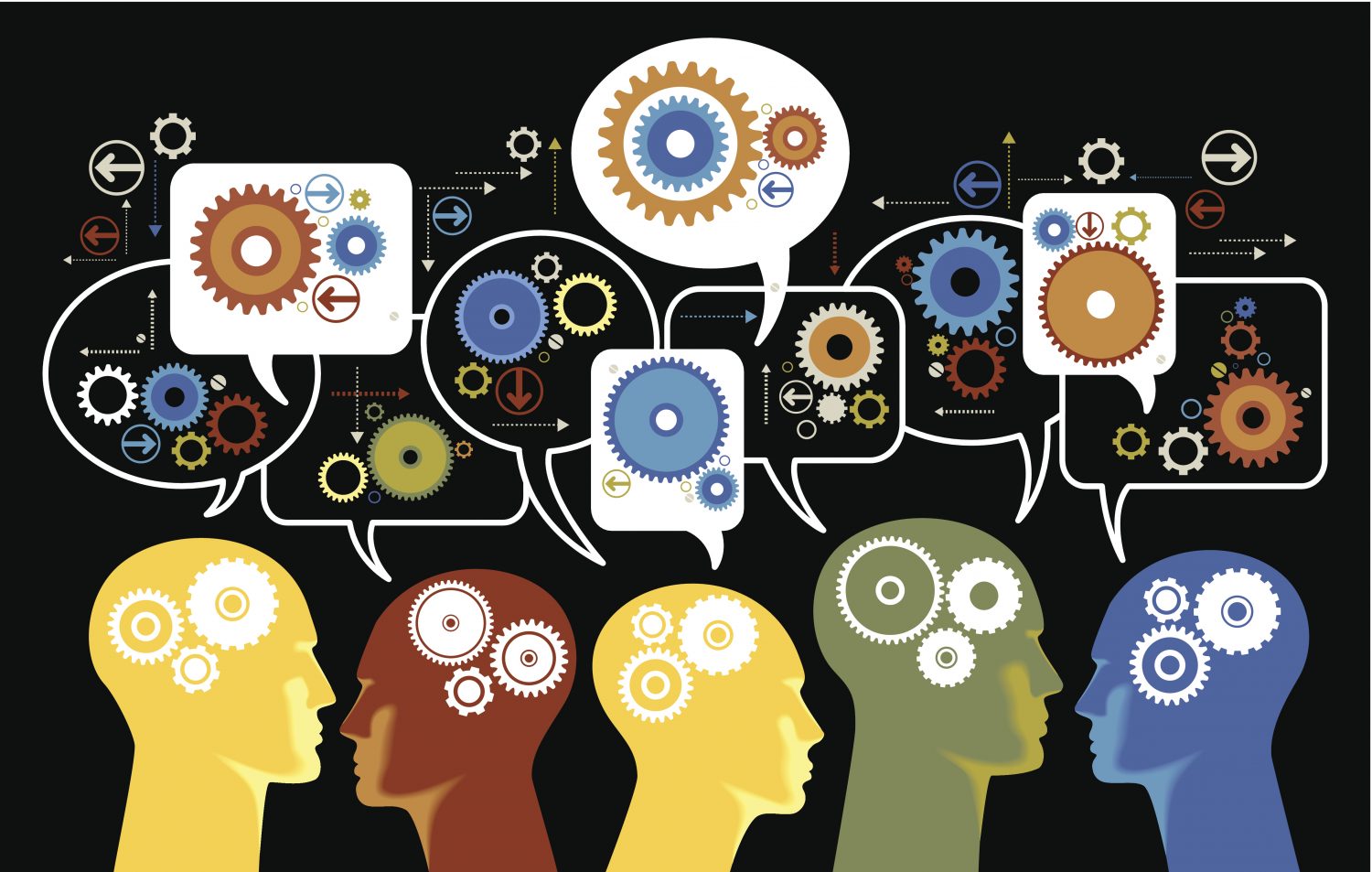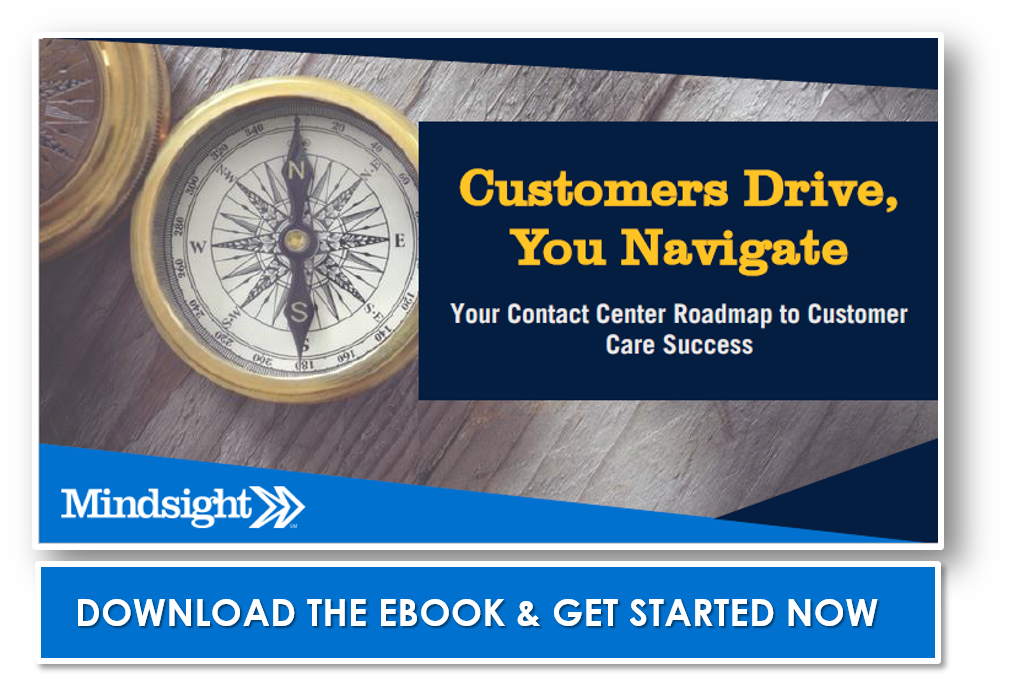July 18, 2018 by Siobhan Climer
20 years ago, the customer experience in the contact center relied on friendly customer service representatives (CSRs) and a general responsiveness to questions or complaints. Today, successfully caring for your customers is far more complex. Your contact center customers still expect great customer service, but they expect it whenever, however, and wherever they want.
Let’s start with defining what the experience is.
Multichannel Vs Omnichannel Customer Experience Definition
Multichannel Customer Experience Definition: A customer service model that enables customers to utilize multiple channels of communication.
Omnichannel Customer Experience Definition: A customer service model that enables customers to utilize multiple channels of communication and integrates within and between those contact channels to provide a high-quality, seamless customer experience.
A Brief History Of Multichannel And Omnichannel
Back in 2009, the contact center still revolved around multichannel experiences. The idea was to give customers the flexibility to approach the company using any channel. Great! Unfortunately, even though customers used these channels – email, chat, phone, social media – the contact center failed to integrate them into a seamless experience.
For example, a customer might visit the company’s website, ask a question via a chat box, and then follow-up with a phone call. Within a multichannel experience, the customer still must verify their identity, re-explain their situation or issue, and speak with multiple CSRs before possibly doing it all over again. The overall experience lacked convenience and consistency.
 Then came omnichannel. The omnichannel customer experience definition revolves around the integration of multichannel into a seamless experience. That same customer from the previous example can engage in the same journey – website, chat, phone – but this time the CSRs who respond to them will have access to the information provided in every step of their journey. Instead of having to spell their last name for a third time, the CSR can pick up the call and say, “Hi Mr. Reeves. I see you’re having an issue with your vacuum cleaner. How can I help you solve it?”
Then came omnichannel. The omnichannel customer experience definition revolves around the integration of multichannel into a seamless experience. That same customer from the previous example can engage in the same journey – website, chat, phone – but this time the CSRs who respond to them will have access to the information provided in every step of their journey. Instead of having to spell their last name for a third time, the CSR can pick up the call and say, “Hi Mr. Reeves. I see you’re having an issue with your vacuum cleaner. How can I help you solve it?”
Why Hesitate? Omnichannel Is Where It’s At
Companies with a strong omnichannel customer service model are much more likely to retain customers than those without: 89% versus 33% (2013), so arguing that it’s a fad dismisses the reality. With omnichannel models, the customer is in control of the interaction. The customer decides how to reach out, when to switch channels, and whether the interaction is successful. The customer is in charge.
Giving up that control might make you hesitant, but it is necessary to keep up with the evolving customer experience. Your customers prefer mobile self-service, and if you don’t provide it, they’ll find someone who does.
Considering a contact center transition? Use a Contact Center Roadmap to get started on your journey. Download our free eBook and find out how to develop a roadmap that brings you to your destination.
How To Transition To An Omnichannel Contact Center
Step 1: Plan
Plan, plan, plan.
It can be tempting to start adding every possible channel – Instagram, Snapchat, Chatbots – but without support, those channels will only frustrate your users. Consider which channels are valuable to your customer personas and then add one-at-a-time. Evaluate the channel metrics and institute a response methodology that transgresses all departments. Marketing, HR, Customer Service, Accounting – every department should be engaged in determining how their work is best supported through each channel. Remember, in the omnichannel customer experience definition, high-quality customer service still dominates the customer’s wish-list.
Step 2: Go Digital
According to the Salesforce blog, over 91% of consumers use email every day. 67% regularly use self-service knowledge-base or FAQs articles. Although 68% of consumers still rely on voice as part of their journey, expectations and desires are changing. Invest in your online presence by developing online self-service content and supporting your digital channels.
- Social Media
- Forums and Message Boards
- Web
- Live Chat
- Self-Service
- Phone
- Text/Mobile
Step 3: Evaluate
How you engage your customers, and how they expect to get in touch with you, is always changing. Customers might take to Twitter to leave negative feedback or post audio of a negative phone call interaction with one of your CSRs on Youtube. In fact, if you look up “twitter complaints to companies” on Google, the first four links are to guides helping customers develop Twitter and Facebook complaints.
Make sure you are monitoring and evaluating the value of each channel as part of your customer service strategy. You need to be responsive and understand how each channel adds value both to you and to your customers.
What’s Next?
There’s a lot of work to do in meeting the omnichannel customer experience definition. Only 7% of multiple device online users were happy with their supposedly “omnichannel” experience. That’s a pretty dismal stat. Companies have a lot of work to do in improving their customers’ experience with their contact center.
What’s more? We can’t count on omnichannel forever. As multichannel has faded from favor, so, too, will omnichannel in another 10 or 20 years. What then?
The key for contact centers is to focus on the customer. Always. Whether multichannel or omnichannel or whatever-is-next-channel (we’re placing bets on onechannel), the customer should always remain the priority. Meeting their expectations and needs, providing trust and transparency, and empathizing with their experience are the business qualities that precede technological innovations. Start there and the rest is table stakes.
Contact us today to discuss how to utilize the omnichannel customer experience definition in your contact center.
Like what you read?
About Mindsight
Mindsight, a Chicago IT services provider, is an extension of your team. Our culture is built on transparency and trust, and our team is made up of extraordinary people – the kinds of people you would hire. We have one of the largest expert-level engineering teams delivering the full spectrum of IT services and solutions, from cloud to infrastructure, collaboration to contact center. Our highly-certified engineers and process-oriented excellence have certainly been key to our success. But what really sets us apart is our straightforward and honest approach to every conversation, whether it is for an emerging business or global enterprise. Our customers rely on our thought leadership, responsiveness, and dedication to solving their toughest technology challenges.
Contact us at GoMindsight.com.
About The Author
Siobhan Climer, Science and Technology Writer for Mindsight, writes about technology trends in education, healthcare, and business. She previously taught STEM programs in elementary classrooms and museums, and writes extensively about cybersecurity, disaster recovery, cloud services, backups, data storage, network infrastructure, and the contact center. When she’s not writing tech, she’s writing fantasy, gardening, and exploring the world with her twin two-year old daughters. Find her on twitter @techtalksio.






